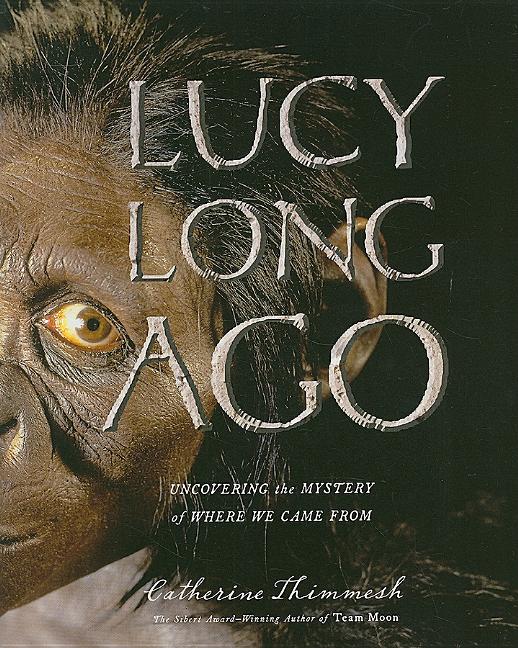Book Description
for Lucy Long Ago by Catherine Thimmesh
From Cooperative Children's Book Center (CCBC)
When the skeleton eventually dubbed Lucy was first found, scientists had many questions. Was it child or adult? Male or female? Known species or new? Bipedal or quadrupedal? Ancient or modern? Author Catherine Thimmesh shows how different types of scientists use evidence to answer those questions, while engaging color photos show the scientists at work in the lab and in the field. Other photos compare and contrast skeletal remains of different species of hominids, and wonderful drawings show what the flesh-and-blood hominids may have looked like. The final chapter follows the work of a paleo-artist who interpreted scientific evidence to create a life-size sculpture of what Lucy—now known to be an early hominid, Australopithecus afarensis —might have looked like. The photo of the sculpture, Lucy’s wide eyes staring straight at the reader, is dramatic and haunting. Repeated references in the narrative to “early man” seem outdated in the twenty-first century and ironic in a book about Lucy, and all of the illustrations use a white male as the model of Homo sapien , but those don’t detract from the overall strength of this fascinating volume. (Ages 11–15)
CCBC Choices 2010. © Cooperative Children's Book Center, Univ. of Wisconsin - Madison, 2010. Used with permission.


